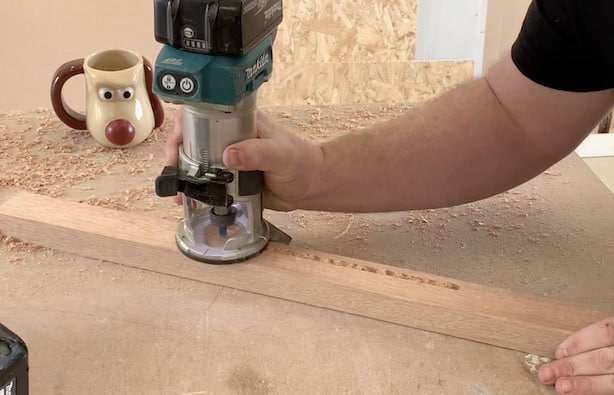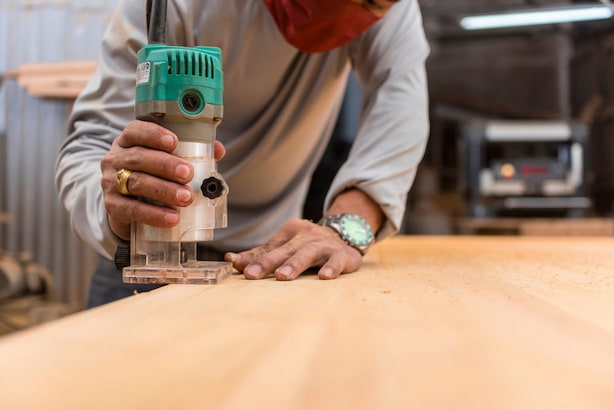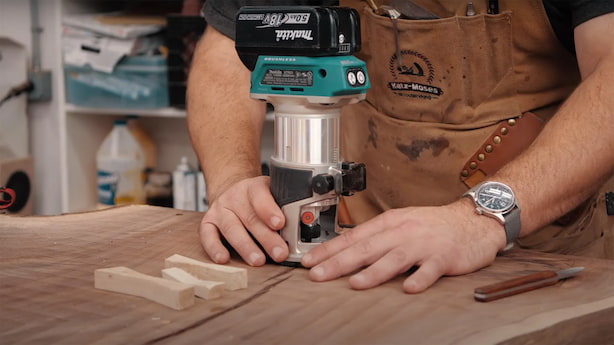Mastering Precision Cuts: A Guide to Laminate Trimmers
Routers are indispensable tools in any woodworker’s toolbox. They make light work when shaping edges, cutting mortises and holes, or detailed cuts like Roman Ogees and dovetails. They come in two basic designs, fixed-base and plunge routers, and can be fitted with a range of accessories such as templates, jigs, fence guides and collars to offer versatility in almost any type of job. But where outright precision in delicate trimming jobs is a necessity, routers have steadily been displaced by their smaller, but equally capable siblings, trimmer routers.
Contents
What are Trimmer Routers?
This is a more compact fixed-base router, with a smaller and less powerful motor. The available 500w to 1KW may be laughable compared to the power in full-sized variants (some reaching 3kW or more), but more than adequate for flush trimming laminate or veneer, in addition to dozens of small joinery uses. Where a trimmer router trumps its bigger brothers is its size. Being smaller makes it more maneuverable, and quicker and easier to work with. And also a fraction of the price.
Why Choose a Laminate Trimmer?
There’s a lot going for laminate trimmers. Besides being absolutely affordable and within reach for any DIY-er or hobbyist, it also pairs well with bigger routers when getting the final touches done. That’s why working pros have a few of them, each fitted with their own cutters. They complement full-sized routers and provide the precision and speed to get the job done faster and to the needed standard.

With the small size comes less weight. A fully-featured trimmer router with an attached bit or guide bearing comes in at a third of the weight. This permits easier control and maneuverability, and more precision when and where it matters. Paired with the smaller base plate and range of precision attachments like guides there’s the ability to work one-handed while having an extra hand to hold down the workpiece. This is also evident in places where full-sized and heavier routers can be cumbersome to use, such as in elevated or overhead jobs.
Lastly, there’s the price, and oddly enough this correlates with the weight. The smaller size and less powerful motor mean that laminate trimmers cost (you guessed it) roughly a third of full-scale routers running bigger motors and bigger bits. What’s intriguing is that though cheaper, a trimmer router outpaces bigger routers, with motors spinning over 30 thousand RPMs.
Where They’re Used
Laminate trimmers were developed for one specific task, trimming laminate and veneer. These are often supplied as oversized than what they’re being glued to, so a tool that could easily trim edges and fit flush with the workpiece edge was a necessity. Before the advent of smaller trimmer routers, the job was done with a regular fixed-based or plunger variant.

As the name suggests, trimmer routers have evolved to more than laminate trimming tasks, and are now used in virtually all routing jobs, from chamfering, beading and rabbeting, to creating dadoes, coves, round noses, dovetails, and a range of cuts used in joinery work and furniture making. They’re also irreplaceable tools for getting decorative wood inlays and grooves. Changing bits allows the router to create perfect flutes or decorative butterfly patches.
Their versatility doesn’t end there. A trimmer router is a perfect tool where precision duplicating is called for, or when drilling holes (instead of drills and drill bits) and other less-obvious tasks, like sign making. While the 1/4-inch collets fit smaller bits, the tool excels in smaller jobs, where precision is paramount.
Choosing the Right Trimmer for Your Application
The compact size and ease of use are the main selling points of trimmer routes. But to ensure work is as easy, quick, and accurate as you intend, a few key features should dictate your buying decision:
- Motors – Corded trimmer routers generally hover around 500W and this should be more than enough for most routing applications. For repetitive cutting and when working with laminate and veneer, routers averaging 700W or more are a better choice. Alternatively, if you need outright portability, then the few cordless options currently sold will be a good buy. The only downsides are battery run times and the slightly lower (25K) RPMs.

- Variable speeds – Trimmer routers have variable speed controls ranging between 10 and 35 thousand RPMs. Speeds can be adjusted according to the material you’re working on, and are another feature that ensures routing accuracy. Most also have programmed slow starts to prevent unintentional damage to the workpiece.
- Weight, controls, and ergonomics – A trimmer router is lighter than even the smallest palm router and weighs about half that. This is specifically designed to be used comfortably with one hand. Look for a non-slip, ergonomic body grip and well-placed controls to minimise fatigue in longer working sessions. Simple controls like rocker on/off switches, depth adjustment, and shaft lock for changing bits on the fly make work safer and speedier.
- Dust collection and accessories- Though not a prerequisite, routers with some type of dust collection system help with precision by maintaining visibility and keeping your workplace clean. Besides bits that need to fit the 1/4-inch collet, look for accessories such as trimming and template guides, and fences for the best results.






